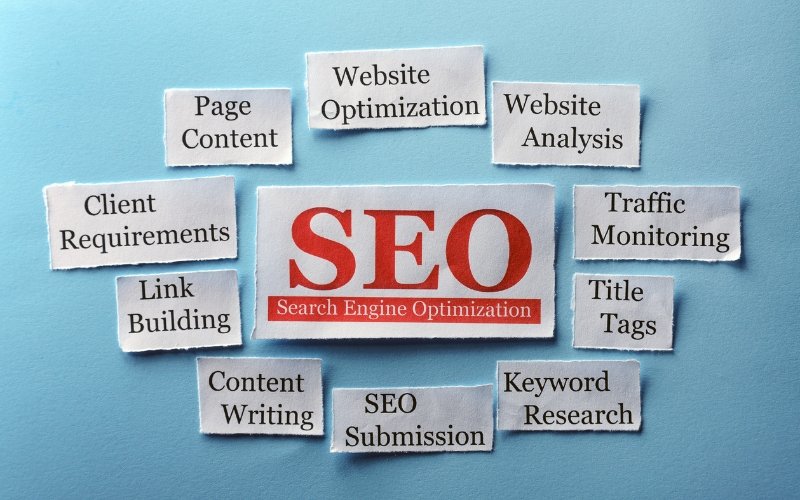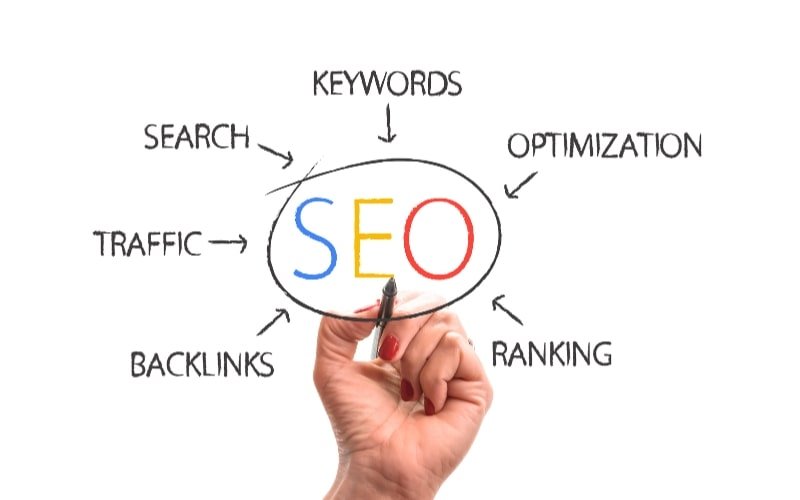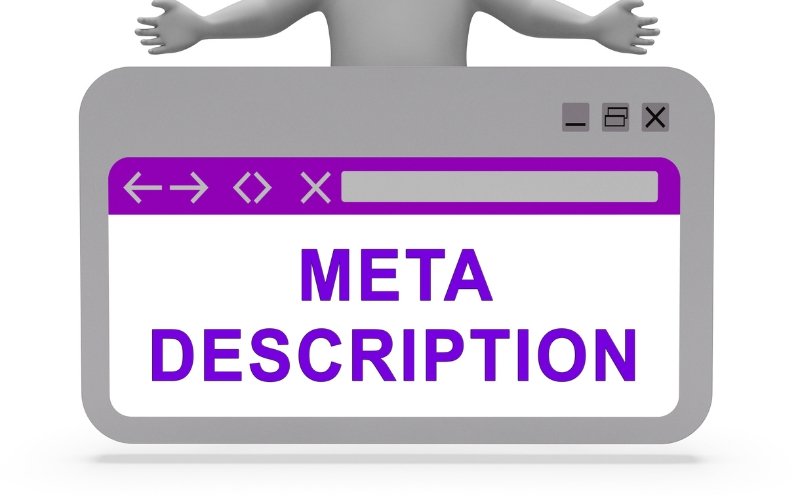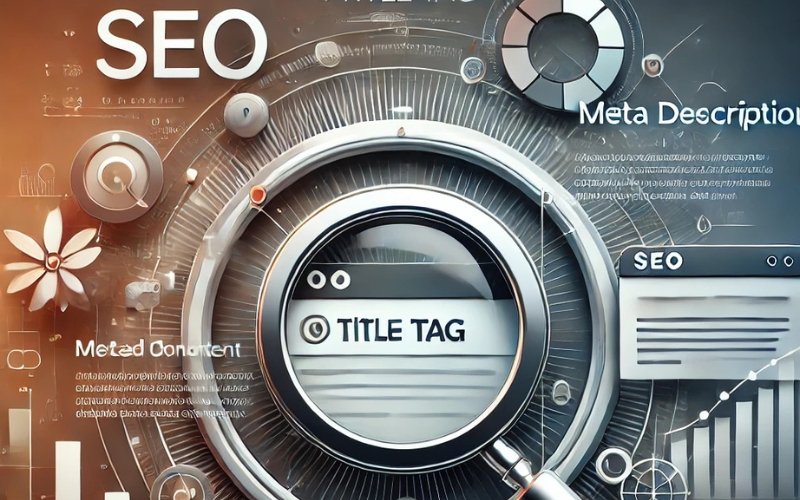On-page SEO optimization is a vital component of any successful digital marketing strategy. By optimizing individual web pages for search engines and improving the user experience (UX), businesses can increase organic traffic, keep visitors on their site longer, and boost engagement. In this article, we’ll explore the key aspects of on-page SEO optimization and how it can enhance both search engine rankings and user experience.
What Is On-Page SEO?

On-page SEO refers to the process of optimizing various elements on a web page to improve its visibility in search engine results. These elements include content, title tags, meta descriptions, internal links, and URL structure. Effective on-page SEO optimization ensures that a website is both user-friendly and easily understood by search engines, making it more likely to rank higher for relevant search queries.
However, in today’s SEO landscape, optimizing for search engines alone is not enough. User experience must also be a priority, as Google and other search engines are placing increasing importance on how users interact with a site.
Key Components of On-Page SEO Optimization
- Content Quality
High-quality content is the cornerstone of effective on-page SEO optimization. Content should be original, relevant, and provide value to the reader. Including target keywords naturally within the text ensures that search engines can understand the page’s purpose. Additionally, structuring content with headings, subheadings, bullet points, and visuals enhances readability and user experience. - Title Tags and Meta Descriptions
Title tags and meta descriptions are critical for both users and search engines. A well-crafted title tag should include the target keyword and be compelling enough to encourage clicks. Similarly, meta descriptions provide a summary of the page content and should incorporate keywords for better on-page SEO optimization. These elements influence click-through rates, which can impact rankings. - URL Structure
A clean and descriptive URL structure contributes to effective on-page SEO optimization. URLs should be short, include the primary keyword, and be easy to read for both users and search engines. For example, “www.example.com/on-page-seo-tips” is more effective than “www.example.com/page?id=12345“. - Internal Linking
Internal links help distribute link equity across pages and improve navigation for users. Effective on-page SEO optimization includes strategically linking to other relevant pages within the website to keep users engaged and guide them toward valuable content. - Mobile Responsiveness
With most searches now happening on mobile devices, ensuring that your website is mobile-friendly is a key aspect of on-page SEO optimization. Responsive design, fast load times, and a seamless mobile experience improve user satisfaction and search engine rankings.
Balancing SEO and User Experience
While optimizing for search engines is vital, focusing solely on technical aspects can negatively impact user experience. Modern on-page SEO optimization requires a balance between appealing to search engines and providing a positive user experience. For instance, while keyword integration is important, overstuffing keywords can make content feel unnatural and deter users.
Search engines like Google prioritize user satisfaction. Factors such as dwell time, bounce rate, and click-through rates are increasingly used as ranking signals. To address this, content should not only target keywords like on-page SEO optimization but also answer user queries effectively and provide actionable insights.
The Role of Analytics in On-Page SEO Optimization
Analytics tools such as Google Analytics and Search Console play a crucial role in evaluating the effectiveness of on-page SEO optimization efforts. These tools provide data on user behavior, page performance, and keyword rankings, enabling continuous improvement.
For instance, tracking metrics like average session duration and bounce rate can help identify pages that need refinement. A page with high traffic but low engagement might require better content structuring, enhanced visuals, or stronger CTAs to align with on-page SEO optimization best practices.
Key Aspects of On-Page SEO Optimization

On-page SEO optimization is the backbone of any successful digital marketing strategy. It focuses on optimizing individual web pages to rank higher in search engine results and drive relevant traffic. Among the many components of on-page SEO, title tags and meta descriptions play a vital role. Here’s a deeper dive into these and how they contribute to effective on-page SEO optimization.
Title Tags: Crafting Effective Headlines
The title tag is arguably the most critical element of on-page SEO optimization. It serves as the clickable headline displayed in search engine results, making it the first impression users get of your content. A well-optimized title tag should be concise, descriptive, and include primary keywords relevant to the content on the page.
Best Practices for Title Tags:
- Include Primary Keywords: Ensure the title tag includes your main keyword, ideally toward the beginning. For instance, a page about “On-Page SEO Optimization” should have the keyword at the start of the title for better relevance.
- Maintain Optimal Length: Google typically displays the first 50-60 characters of a title tag. Keep it within this limit to avoid truncation in search results.
- Add Value to Users: Write compelling, click-worthy titles that address the user’s intent and encourage them to click.
Optimizing title tags is a fundamental practice in on-page SEO optimization, helping search engines understand your content and making your site more appealing to users.
Meta Descriptions: Encouraging Clicks
While meta descriptions don’t directly impact rankings, they significantly influence click-through rates (CTR), which can indirectly boost your site’s performance. A well-crafted meta description provides a concise overview of the page content and highlights why users should visit your site.
Best Practices for Meta Descriptions:
- Use Target Keywords: Like title tags, meta descriptions should include primary keywords such as “On-Page SEO Optimization” to improve relevance and attract clicks.
- Be Clear and Concise: Limit descriptions to 150-160 characters to ensure they display fully in search results.
- Incorporate a Call-to-Action (CTA): Use phrases like “Learn more,” “Discover tips,” or “Find out how” to encourage user engagement.
A well-optimized meta description is an essential part of on-page SEO optimization and can improve both CTR and user satisfaction.
Beyond Title Tags and Meta Descriptions

While title tags and meta descriptions are crucial, on-page SEO optimization encompasses other elements as well. These include:
- Header Tags (H1, H2, H3): Structure your content with headers to make it easy for search engines and users to navigate. Incorporate keywords naturally within these headers to improve relevance.
- Content Quality: High-quality, keyword-rich content is essential for effective on-page SEO optimization. Ensure your content provides value, answers user queries, and maintains readability.
- Internal Links: Linking to related pages within your site enhances navigation and helps search engines understand the hierarchy of your content.
- Image Optimization: Use descriptive alt tags and filenames, and compress images to improve page load speed, which is a critical aspect of on-page SEO optimization.
Header Tags (H1, H2, H3) Proper use of header tags helps structure the content on a web page, making it easier for both users and search engines to understand the page’s main points. The H1 tag should be used for the primary headline, while H2 and H3 tags can be used for subheadings. These tags help break up the content into manageable sections, improving readability and user engagement. Optimizing header tags with relevant keywords also helps search engines better index the content, which can lead to improved rankings.
Content Quality and Keyword Optimization The content on a webpage is the most critical factor in on-page SEO. It should be high-quality, engaging, and relevant to the user’s search intent. While keyword optimization remains essential, it’s important to avoid keyword stuffing, which can lead to penalties from search engines. Instead, focus on using keywords naturally throughout the content, especially in the introduction, subheadings, and conclusion. Ensure the content provides value to the user by answering their questions and offering solutions.
Internal Linking Internal links help guide users and search engines through a website, connecting related content and making it easier for visitors to find what they’re looking for. A good internal linking strategy improves the user experience by providing a clear navigation path and keeping users on the site longer. From an SEO perspective, internal links help search engines understand the hierarchy of content and distribute authority across pages, improving rankings.
Image Optimization Images play a significant role in user engagement, but they also impact SEO. To ensure that images contribute positively to on-page SEO, they should be optimized with descriptive alt text, which helps search engines understand what the image represents. Additionally, compressing images without compromising quality can improve page load times, which is a key factor in both user experience and search engine rankings.
Mobile Optimization With mobile traffic now surpassing desktop traffic, optimizing a website for mobile devices is crucial. A mobile-responsive design ensures that a website adapts to various screen sizes and provides a seamless user experience across devices. Mobile optimization also impacts search rankings, as Google uses mobile-first indexing, which prioritizes the mobile version of a website when determining its ranking.
Page Load Speed Page load speed is another critical factor in both user experience and SEO. A slow-loading website can frustrate users and increase bounce rates, which negatively impacts rankings. Tools like Google PageSpeed Insights can help identify areas where page load speed can be improved. By compressing images, minifying code, and using browser caching, businesses can enhance page load times and improve user satisfaction.
Conclusion
On-page SEO optimization is about more than just ranking higher in search results—it’s about providing a better user experience. By optimizing title tags, meta descriptions, content, internal links, and images, businesses can enhance their website’s search engine visibility and user engagement. Focusing on mobile optimization and improving page load speed ensures that users have a positive experience, which in turn boosts rankings and drives more traffic to the site.

